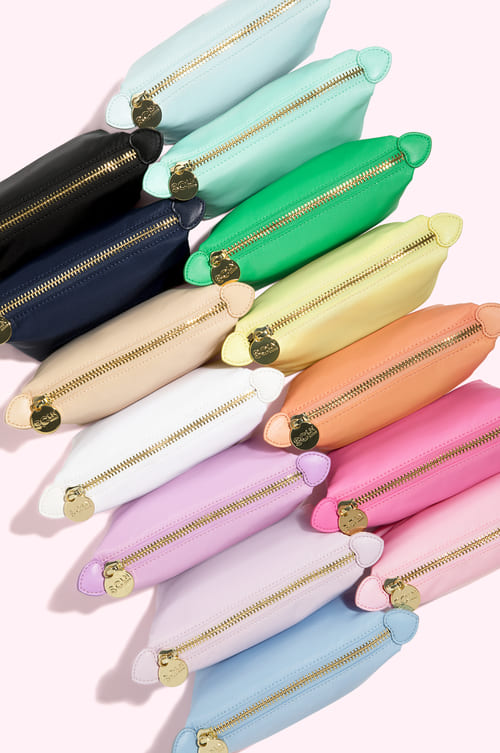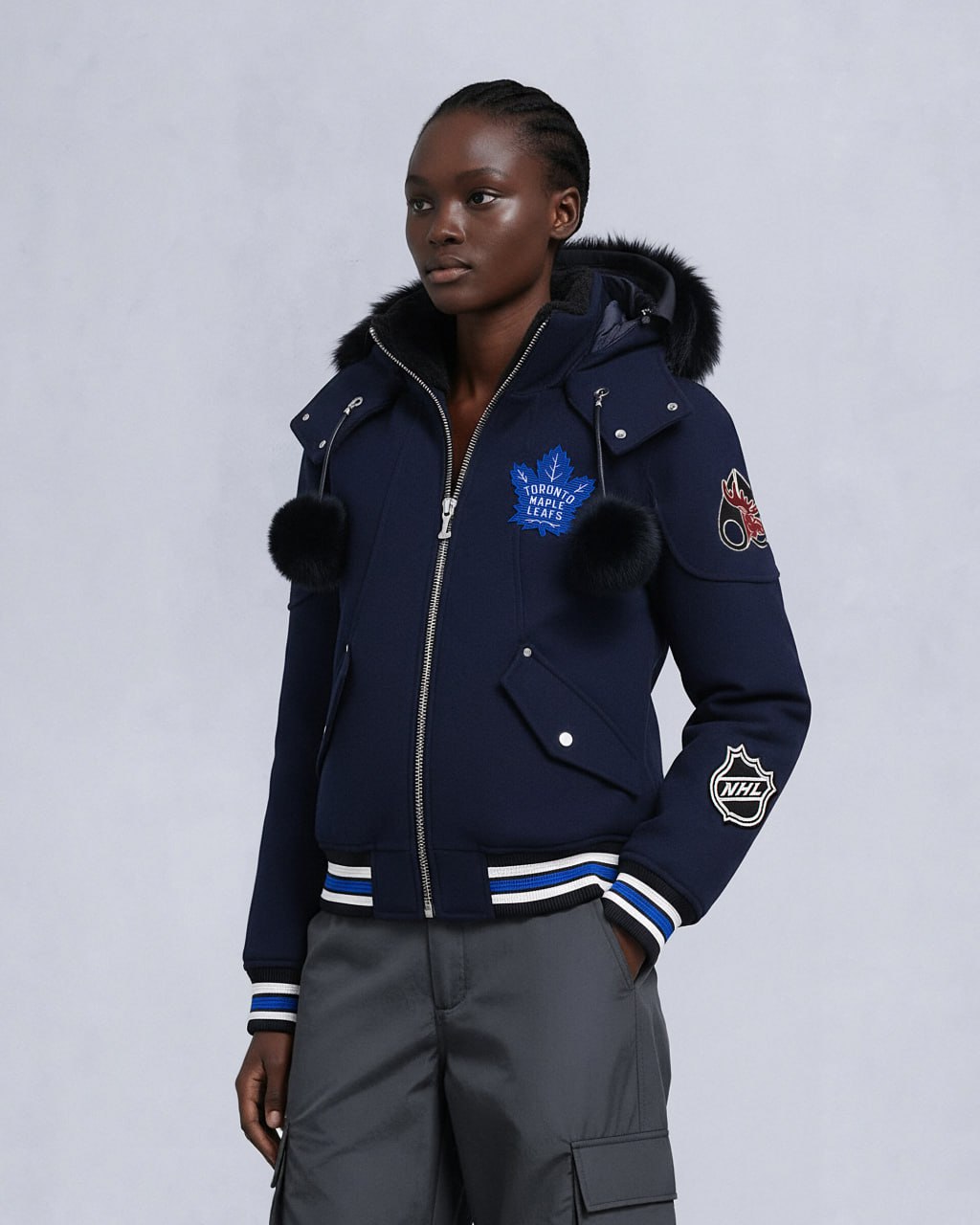The Ultimate Guide to Enhance E-commerce Marketing for the Holidays
The winter holiday season is an economic force unlike any other. Black Friday, Cyber Monday, Christmas, and New Year’s combined can make a retailer’s year. Consumers are in a heightened buying state, their emotional connections to gifting and celebration pushing them to purchase faster and in higher quantities.
Retailers who succeed during the winter holidays understand something fundamental — this isn’t just about sales. This season is about the experience, anticipation, and emotion building up to it, which fuels the gift-giving spirit worldwide.
But here’s what most brands get wrong: They focus only on Q4.
The truth is, holiday marketing is not a seasonal effort — it’s a year-round strategy. Each holiday has its own consumer psychology, urgency triggers, and visual expectations, and mastering them throughout the year is what allows brands to maximize revenue when the stakes are highest.
This guide will take you beyond basic discounting and generic promotions. You’ll learn how to craft high-converting holiday campaigns, build emotional appeal through visuals, and turn seasonal shoppers into lifetime customers.

Strategic Approach is Essential for Holiday Marketing
The Impact of Holiday Shopping Trends on E-commerce Sales
Holidays trigger predictable yet powerful consumer behaviors. Shoppers justify higher spending during holidays because purchases feel meaningful — whether it’s gifting, self-rewarding, or celebrating traditions.
Holidays lower the barriers to impulse purchases. Brands that build urgency (limited editions, time-sensitive discounts, emotional storytelling) see massive gains. Ad costs rise, but so do conversions — people are actively looking to buy. A strong holiday marketing strategy is about owning the consumer mindset.
The Role of Emotional Appeal in Holiday Advertising
People don’t just buy products during the holidays — they buy meaning. Successful brands don’t market features; they market emotions.
Fashion houses like Ralph Lauren use nostalgia, elegance, and tradition to create a sense of belonging. Jellycat’s Valentine’s Day campaign transformed a plush toy into an emotional comfort object, making it desirable beyond just kids. Lush leverages sensory marketing with immersive visuals of colors and textures, making their seasonal collections irresistible.
The takeaway? If your holiday campaigns don’t evoke a feeling, you’re just another retailer in a sea of discounts.
Why Starting Early is Crucial for Holiday Digital Marketing Success
You don’t turn on holiday marketing the week before a key event. By then, it’s too late. The brands that win holiday sales are the ones that plan months ahead.
- Photography and creative assets? Shot, edited, and ready well in advance.
- Ad campaigns? A/B tested before peak season.
- Landing pages? Optimized for conversions, with strong storytelling baked in.
A well-executed holiday campaign doesn’t start with a promotion — it starts with a strategy.
Key Holidays to Target for Maximum E-commerce Growth
Black Friday & Cyber Monday: Mastering the Peak Shopping Season
The biggest e-commerce event of the year is about psychology. Consumers expect urgency, limited-time offers, and exclusive deals they can’t afford to miss. Winning strategies include:
- Teaser campaigns that start weeks in advance to build anticipation.
- Amazon holiday ad optimization to ensure top visibility in the marketplace.
- Bundling high-margin products to increase average order value (AOV).
Read more about Black Friday marketing practices here: Proven Black Friday Marketing Strategy for E-commerce Businesses
Halloween: Spooky & Fun Creative Holiday Marketing Ideas
Halloween is one of the most engaging holidays for brands, especially in industries like food, beauty, fashion, and home decor. Themed content drives high social media engagement, making it a prime season for brand awareness campaigns.
- Limited-edition holiday packaging and product collections tap into the seasonal hype.
- User-generated content campaigns (costume contests, spooky unboxings) create viral brand moments.
- Themed storytelling ads bring products to life in a playful, immersive way.
Valentine’s Day: Emotion-Driven Holiday Advertising for Higher Conversions
This holiday is about meaningful gifts, emotional storytelling, and personalization. Consumers don’t just buy for their partners; they buy for themselves, their friends, and even their pets.
- Gift guides segmented by recipient (romantic, self-love, Galentine’s Day (girl friendship day).
- Social media storytelling campaigns featuring real relationships and emotions.
- Personalized product offerings that make gifts feel special and unique.
Wanna know real practical Valentine’s Day strategies? Don’t miss out on our article!
The 4th of July: Building a Patriotic Brand Presence
Independence Day shopping requires bold branding, summer energy, and limited-time sales. Smart strategies include:
- Exclusive product drops to drive seasonal demand.
- Community-driven campaigns that align with local celebrations.
- Patriotic-themed email and ad creatives that resonate with American consumers.
- Vivid visual content
Mother’s Day & Father’s Day: Tapping Into Sentimental Gifting Trends
These are two of the most emotionally driven shopping events of the year. Customers seek products that show thoughtfulness, appreciation, and love.
- High-end, aesthetically pleasing product photography enhances gift appeal.
- Visual assets featuring real parent-child relationships increase authenticity.
- Limited-time bundling options encourage higher spend per customer.
Explore actionable articles on Mother’s Day and Father’s Day marketing strategies!
Thanksgiving: Gratitude-Based Holiday Marketing Ideas for E-commerce
The best brands use this season to build goodwill and loyalty ahead of the biggest shopping weekend of the year.
- Exclusive VIP sales for repeat customers to boost retention.
- Cause-driven marketing campaigns (donating a portion of proceeds, supporting local charities).
- Heartfelt brand storytelling that connects on an emotional level.
Learn how to leverage Thanksgiving marketing to strengthen your brand and drive pre-Black Friday engagement.
Easter: A Hidden Opportunity for Seasonal Sales
Easter may not be as retail-heavy as Christmas, but it presents major marketing opportunities, especially in industries like food, fashion, and children’s products.
- Bright, spring-themed product photography enhances seasonal relevance.
- Limited-time promotions on pastels and spring collections create urgency.
- Interactive marketing campaigns (virtual egg hunts, giveaways) drive engagement.
Christmas: The Ultimate Gifting Season
Christmas means tradition, nostalgia, and the magic of giving. Consumers are in high-spending mode, making this the most critical holiday for e-commerce brands.
- Gift-wrapping services and beautifully designed packaging add value.
- Early holiday promotions (starting in October) ensure customers shop ahead of the rush.
- Highly visual, emotionally charged marketing campaigns drive impulse purchases.
Discover how to craft a Christmas visual marketing strategy that converts.
Successful holiday marketing requires aligning with seasonal emotions, creating visually compelling campaigns, and understanding how consumer behavior shifts throughout the year. Brands that get this right build lasting customer relationships.
Holiday Ecommerce and Visual Marketing Strategies to Maximize Sales
Leveraging Limited-Time Offers and Flash Sales
There’s a reason why countdown timers, one-day sales, and “only a few left” stock alerts dominate high-performing holiday campaigns — they work. Scarcity and urgency tap into deep psychological triggers that make consumers act fast.
Scarcity + Urgency = Conversion Acceleration
- Scarcity: When people believe a product is limited, they experience a sense of loss aversion — FOMO (fear of missing out). They don’t want to regret not grabbing the deal.
- Urgency: A ticking clock forces decision-making. The shorter the window, the less time consumers have to second-guess.
The Wow Effect: How Holiday Product Photography Drives Emotional Purchases
The holiday season is always about feelings — joy, nostalgia, or warmth. Flat, lifeless product images won’t sell during the holidays. Consumers are in an emotionally driven purchasing state, and the brands that understand how to create a sensory, storytelling experience through visuals are the ones that stand out.
How Do You Make Holiday Product Photography Feel Irresistible?
Festive Mood Boards: Every great holiday campaign starts with a mood board — a visual direction that captures the emotion, color palette, and aesthetic you want to convey.
Lighting & Atmosphere Matter: The right lighting makes a product feel aspirational. Think:
- Warm, golden tones = nostalgia & tradition
- Soft, diffused lighting = coziness & intimacy
- Cool, crisp light = modern & sophisticated
Lifestyle Integration: Product shots are fine, but they don’t tell a story. A scarf sitting on a white background is just a scarf. A scarf wrapped around a model drinking hot cocoa in a festive cafe? That’s a feeling. Make your product photography immersive.
Gift-Wrapped Presentation: Consumers are in "gifting mode", so showcase products as wrapped gifts rather than just items on a shelf. Adding festive bows, ribbons, or elegant packaging makes items feel like good service.
360-Degree Visuals & Video: With the rise of e-commerce video marketing, static images alone are no longer enough. Short-form videos that show product texture, packaging, and real-life use cases drive higher conversions.
Optimizing Holiday Product Photography for Higher Click-Through Rates
If your product visuals aren’t compelling, your click-through rate will suffer. Different holidays require different emotional aesthetics:
- Christmas? Cozy, nostalgic, gold and red tones.
- Halloween? Dark, playful, mysterious.
- Valentine’s Day? Romantic, playful, intimate.
Aligning your visual storytelling with the holiday mindset immediately connects with shoppers’ emotions.
Context-rich lifestyle photography shows how a product fits into the holiday experience.
- A holiday candle in its packaging? Fine.
- Or holiday candle flickering on a dinner table at a festive gathering? That’s desire.
Over 70% of holiday shopping happens on mobile — your images need to pop on smaller screens. Social media ads prioritize bright, eye-catching, clear visuals with minimal text overlay. Customers want to see details before they buy. If they can’t zoom in on textures, finishes, and materials, they’re more likely to hesitate.
A/B test different visual styles — sometimes, a small tweak in color grading, background, or framing can make a significant difference in click-through rates. Split-test product photos to see which aesthetic converts best.
Conversion Optimization: How to Turn Holiday Traffic into Customers
Creating Seamless Holiday Shopping Experiences on Your Website
The holiday season brings in high-intent shoppers, but if your website isn’t optimized for speed, clarity, and effortless checkout, you’re driving them straight to your competitors. Every second of friction — whether it’s slow loading, confusing navigation, or a multi-step checkout — destroys conversion potential.
The Power of Holiday-Specific Landing Pages
Creating dedicated holiday landing pages early in the season improves your chances of ranking for high-intent keywords like “best Christmas gifts for dads” or “Cyber Monday tech deals”. These pages should be optimized with:
- Holiday-specific product collections
- Clear CTAs that drive urgency
- Schema markup for rich search results (star ratings, pricing, availability)
Retargeting Strategies to Win Back Holiday Shoppers
Not every visitor buys on their first visit. That’s expected. But brands that implement structured retargeting funnels recapture lost revenue and significantly increase conversion rates. Dynamic retargeting pulls the exact product a shopper viewed and serves it back to them in an ad. Instead of a generic “come back and shop” message, they see the specific product they were interested in, often with an added incentive like:
- “Still thinking about it? Only 5 left in stock!”
- “Complete your purchase now and get free express shipping.”
- “Your holiday gift is waiting — order today before it’s gone.”
Holiday Customer Service: Keeping Up with Increased Demand
A single bad customer service experience can cost you the sale and the lifetime value of the customer. During the holidays, expectations for fast, helpful, and reliable customer support are higher than ever.
Holiday shoppers expect real-time answers, and a lack of instant support leads to high cart abandonment rates. AI-driven chatbots and live chat agents help reduce friction.
The biggest customer service complaints during the holidays revolve around shipping uncertainty. Proactive brands:
- Send real-time order tracking updates
- Automate SMS and email notifications about delays or estimated delivery windows
- Offer easy, no-hassle return policies to increase confidence
A dedicated holiday support team (even outsourced temporarily) ensures response times remain fast, especially in live chat and social DMs, where customers expect immediate responses.
Post-Holiday Strategies: Maximizing Your Seasonal Gains
Turning Seasonal Shoppers into Year-Round Customers
The biggest mistake brands make after the holiday season is treating customers as one-time buyers instead of long-term relationships.
- Loyalty Programs: Offer points-based rewards for every holiday purchase, encouraging customers to return post-holiday.
- Exclusive VIP Access: Convert first-time buyers into repeat customers with “members-only” early access to new collections.
- Subscription Upsells: Promote post-holiday subscription models for consumables, beauty, and wellness brands.
Analyzing Holiday Campaign Performance for Future Growth
What worked? What didn’t? Smart brands don’t guess — they analyze.
Key metrics to evaluate:
- Conversion rates by channel (email, paid ads, organic search)
- Best-selling products vs. underperforming inventory
- Ad spend efficiency and ROAS (Return on Ad Spend)
- ROMI
This post-mortem ensures next year’s holiday strategy is data-driven and stronger.
Managing Post-Holiday Inventory and Planning for the Next Season
If you’ve planned well, your inventory aligns with demand — but even the best forecasts can leave surplus stock after peak shopping periods. What you do next determines whether you preserve margins or fall into deep-discount liquidation mode. Instead of heavy discounting, brands can:
- Offer mystery bundles to clear stock at higher margins.
- Avoid prolonged deep discounts that train customers to wait for price drops. Instead, 48-hour liquidation sales drive urgency.
- Offer "thank you" discounts to your most engaged shoppers rather than broadcasting a public clearance event.
- Strategically donate surplus items to charitable causes
- Use inventory insights to forecast next year’s demand more accurately.
Key Metrics to Analyze:
- Sell-Through Rate by SKU – Which products moved faster than expected? Which were overstocked? Adjust next year's holiday purchase orders accordingly.
- Return & Exchange Rates – If specific products saw higher-than-average returns, investigate whether it was due to misleading imagery, incorrect sizing, or quality issues.
- Marketing Channel ROI – Break down conversion rates by email, paid ads, organic search, and influencer partnerships to reallocate spend efficiently next year.
By reviewing these insights, brands can adjust production, refine messaging, and optimize ad budgets for the next seasonal cycle.
Next Step to Your Perfect Holiday Marketing
Holiday seasons are golden opportunities for e-commerce brands to drive revenue, connect with customers on an emotional level, and stand out in a crowded market. The key to success lies in strategic planning, high-quality visual content, and targeted marketing efforts. Whether you're gearing up for Black Friday or planning a heartfelt Valentine's Day campaign, one thing remains constant: the power of visuals to captivate and convert. If you want to create stunning holiday product visual assets, Lenflash’s expert services can help you make a lasting impression.















